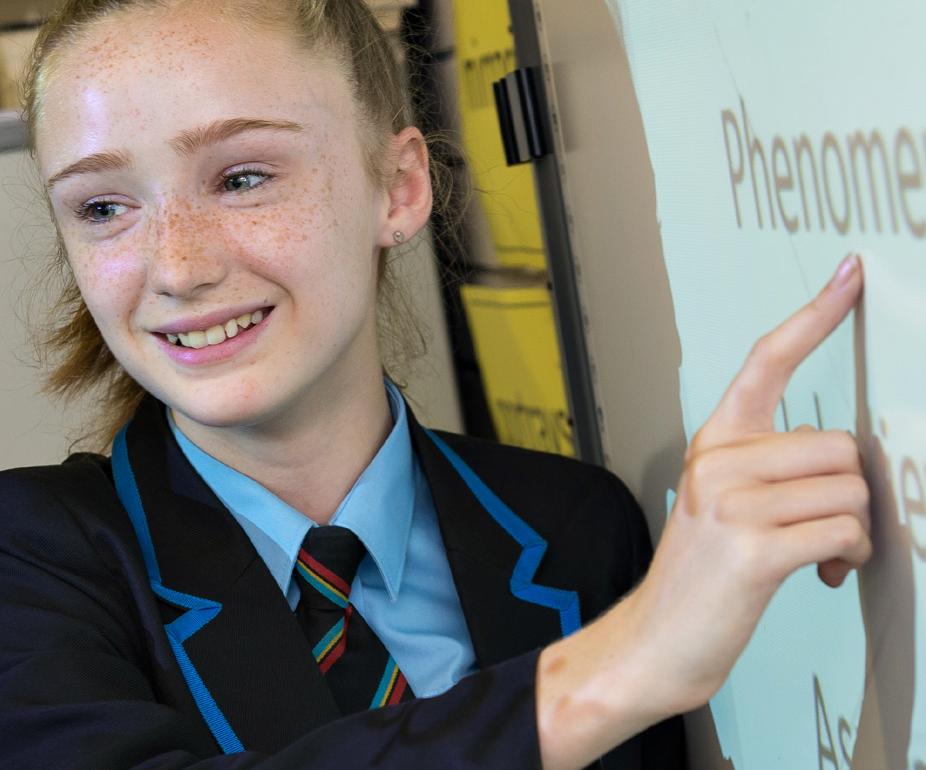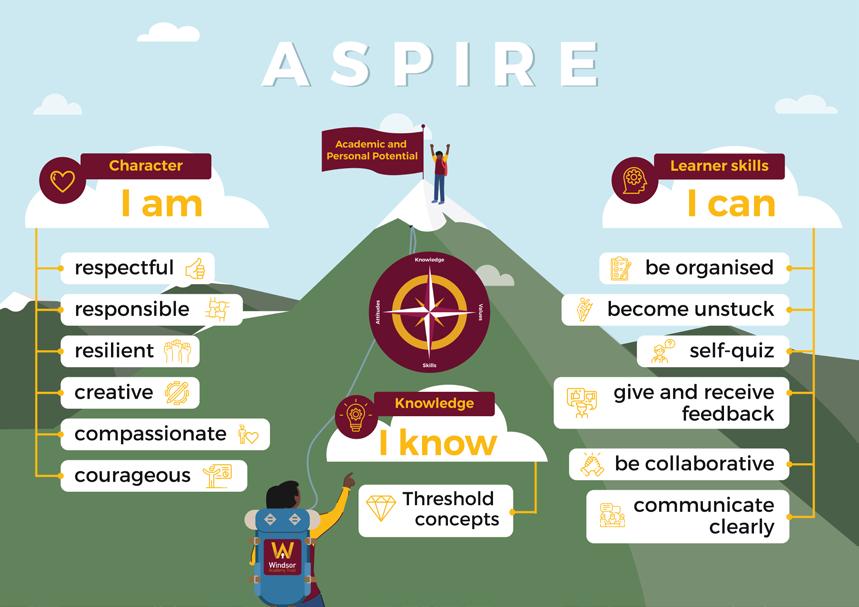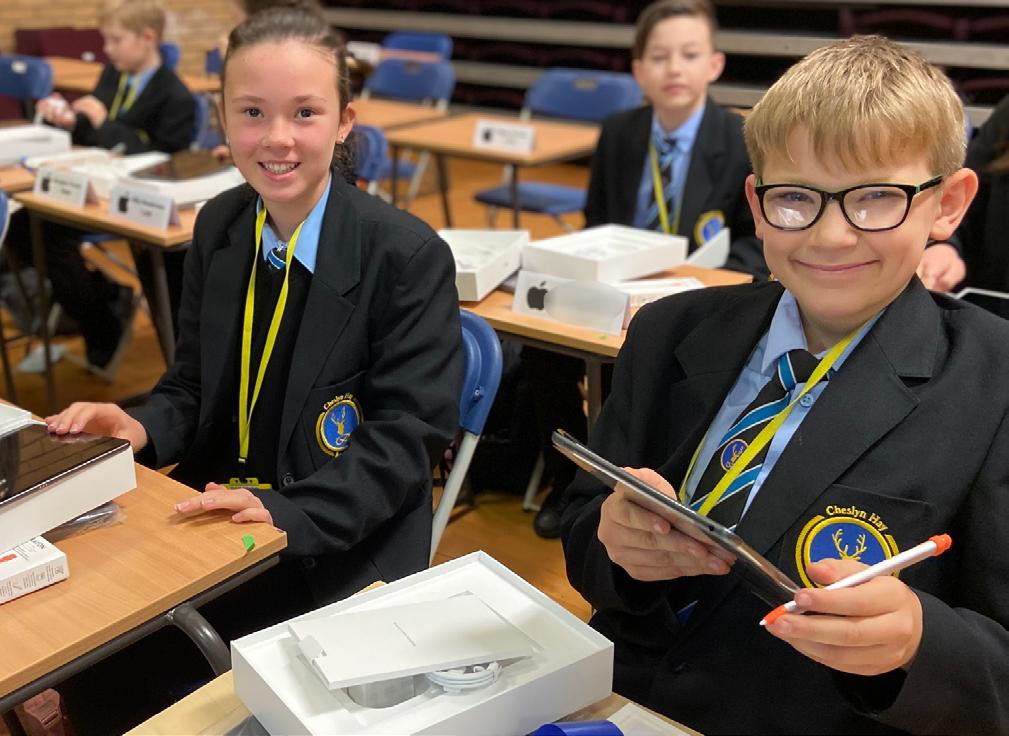Curriculum Set
Play
By Helen Kinsey



Our Curriculum Intent: Starting from the CurriculumPowerful Knowledge
The Confederation of School Trusts (CST) in their paper ‘Knowledge building- school improvement at scale (2021) stated that possibly the strongest school improvement lever we have is the curriculum.
The curriculum, according to Michael Young should be the ‘best knowledge - the most powerful knowledge, knowledge that goes beyond ‘common sense’ (what we acquire through our everyday experience). The curriculum should therefore empower all learners, creating a successful pathway to university, their career and life, thus as Young concludes, all students, not just those identified as having ‘academic ability’ have the right to acquire knowledge during their schooling. The aspiration of our curriculum is echoed in the words of Christine Counsell when she argues that ‘ A curriculum exists to change the student, to give the student new power.’ That powerful knowledge should allow our students to not only unlock their institutionalised cultural

capital (what Bourdieu defines as qualifications) but also allows them to develop a cultural capital that offers the same enrichment opportunities to all, regardless of socio economic background, thus all students’ personal potential also becoming unlocked.
At Windsor Academy Trust our curriculum exists to ensure all students regardless of background and ability can aspire to ‘unlock their academic and personal potential’. It empowers and equips students with the knowledge, character virtues and learning skills required to thrive in learning and in life and is a driver of equality and social cohesion. The values of our curriculum therefore gives agency to more than just academic potential. We seek our students to thrive in a globalised world, to give all students regardless of background the opportunities to be creative and empathetic when faced with existential challenges.

The Importance of Subject Domains: Co-constructing the WAT Threshold Curriculum

Our collaborative Trust wide approach to curriculum design began in the Summer of 2019. In curriculum teams across our four secondary academies we found it useful to begin with the questions ‘what is the aim of our curriculum?’ and ‘what do we want our students to know and be able to do within our subject disciplines?’ At the heart believing that knowledge should be taught to be remembered, not merely encountered.
Christine Counsell (2018) argues that Subjects are derived from the great traditions of knowledge construction in academic and artistic fields, each with its own rules of enquiry and evidence, its own traditions of argument and debate or its own standards of performance and judgement. Each subject echoes a distinctive quest for truth and each carries accumulated wisdom that must be mastered if its wider ways are to be opened up. The knowledge of the subject expert was therefore crucial in the construction of the Threshold Curriculum. The subject curriculum experts across all four academies worked collaboratively to plan and identify the threshold concepts. As Myatt identifies ‘we cannot learn everything; planning is as much about deciding what not to teach as it is about what to include.’

Andrew Percival stated that ‘we need to create a curriculum culture in schools.’ Thus curriculum design and development is an ongoing process, which means as a family of schools we support the idea that curriculum work is a living, breathing, organic process.
Subject Teams continue to work collaboratively to evaluate and review the powerful knowledge narrative identified within their subject discipline. Identifying the component knowledge, in essence, the knowledge students need to know, the building blocks needed for students to be able to achieve their academic potential, has been essential to ensure students can access the composite knowledge, the end point necessary to be successful within the subject domain.
Working collaboratively ensures that the curriculum design is of high challenge and is what Myatt would describe as ‘above the pay grade’ of the students in our classrooms. Working in subject domains across the family of schools allows agency within this powerful cycle of collaboration and has put curriculum development and subject knowledge at the heart of school life.
Threshold Curriculum Framework
Our curriculum is the progression model, if students are learning and remembering more of the curriculum, they are making progress. Our curriculum design has been heavily informed by national and international literature reviews.
Component and composite knowledge
Myatt outlines how curriculum design is about deciding what not to include as much as it is about what knowledge to include. Staff collaboratively within their subject domains have identified what they want students to know by the end of a cycle, the composite outcomes. They have planned the precise component knowledge students need in each cycle of the curriculum to achieve that composite aim. The collaboration began with the question ‘what
Threshold concepts
Threshold concepts define potentially powerful transformative points in the student’s learning experience. They are the ‘jewels in the curriculum’ because they identify key areas that need mastery. Until students ‘get them’, they can struggle to understand a subject.
Identifying threshold concepts is not straightforward, because we need to ‘retrace the journey back to the innocence’ (Cousin, 2006), which is tricky when you are an ‘expert’.
For example, in geography, the concept that physical processes create and change environments comes up in topics such as rivers (in which case it is erosion and deposition that is the process); volcanoes (in which plate tectonics is the process); coasts (erosion and deposition) etc. A lack of conceptual progression can prevent later learning or can lead to a superficial understanding. Thus presenting new information to students as another example of the threshold concept allows them to process information in
knowledge do we want our students to have by the end of the cycle?’ This component knowledge subsequently forms the building blocks necessary for students to be able to achieve their academic potential.
‘When pupils understand more complex ideas, the jenga tower is sturdy. When bits of knowledge are missing, the tower can become wobbly.’
Heather Fern, EIF

relation to previously learned knowledge.
Our threshold curriculum is anchored in high challenge for all, it will provide the platform in empowering and equipping students with the foundations for examination success and lifelong learning. To facilitate this, the curriculum identifies threshold concepts. According to Meyer and Land (2003), a ‘threshold concept’ represents a transformed way of understanding, or interpreting, or viewing something without which the learner cannot progress.’ On this basis, then, they might be considered the crucial elements of disciplinary understanding within a subject - the things that make some students ‘get it’ while others don’t. Threshold concepts can be considered as ‘akin to a portal’, opening up a new and previously inaccessible way of thinking about something. It represents a transformed way of understanding, or interpreting, or doing something without which the learner cannot progress. Mary Myatt further supports the idea of going deep with concepts ‘when children
understand concepts, it makes new knowledge stickier. If pupils have access to, understand and are able to use the conceptual, technical vocabulary expertly and confidently, we are leading them into the territory of long-term memory.’
Threshold concepts are carefully identified and interleaved within the curriculum so that they are taught, retaught, reviewed and refined with
Mastery and deep learning
The route to deep learning and the development of expertise and mastery is to do fewer things in greater depth, as illustrated by Mary Myatt. Threshold Concepts are mastered through repeated sequencing, that allows the student to apply Threshold Concepts into different contexts.
different component knowledge attached to the concept to help address misconceptions and create stronger schematic architecture. This will give students the opportunity to master the threshold concepts, allowing concepts already understood by students to be brought into new relations of abstraction, giving the student yet more power to challenge and create.

This curriculum design will therefore avoid leaving gaps in learners’ conceptual understanding and make time and room for ‘deep’ learning and understanding of threshold concepts over their curriculum journey.


Long term memory: retrieval, sequencing and storytelling
Recent advances in the science of learning and memory have been integral in the construction of the Threshold Curriculum. Specifically, recent work has shown that retrieval and sequencing is critical for robust, durable, long-term learning.
Every time a memory is retrieved, that memory becomes more accessible in the future. Retrieval also helps people create coherent and integrated mental representations of complex concepts, the kind of deep learning necessary to solve new problems and draw new inferences. Willingham argues that we should create the conditions for students to learn the concepts that come up again and again. Thus when returning to key component knowledge or threshold concepts we need to identify when would be the most effective time to do so. We need to explicitly think about where we have seen this concept, expertise, behaviour or pattern before and expose its relationship to what we are teaching now. Knowledge pays off when facts are related to each other, hence our threshold curriculum design, where threshold concepts are integrated and revisited throughout the curriculum. Disconnected facts, that have no context, are what Pinker would describe as ‘unlinked pages on the web: they might not as well exist’.
Sequencing: Curriculum ultimately is a narrative, a journey and a conversation, we therefore have to sequence the curriculum so that it makes sense, to allow things to unfold meaningfully. Curriculum sequencing is therefore more than ordering its component parts - it is about understanding the relationships and connections between them, and the deeper understanding that the sequence allows our students to access. This avoids cognitive overload by not introducing complex concepts before students have mastered foundational knowledge, preventing frustration and misconceptions. As Howard and Hill (2020) suggest, ‘we begin to move towards a better model when we start to see how one episode of
teaching requires prior knowledge to not only reinforce memory but to access new learning.’
The Long term memory is the foundation for incorporating and making sense of new knowledge. Material sits in the long term memory when it has been ‘chunked’ into meaningful schemata, stories or concepts. The troublesome and often complex nature of threshold concepts means that it is likely to take several attempts at explaining them before the transformative effect takes place with the students. Sequencing Threshold Concepts over the journey of the curriculum therefore helps students to make progress and allows students to apply the Threshold Concepts into different contexts within and across subjects.
Story Telling: Myatt explains that stories have the power to provide a context for the big ideas and concepts. They can provide a hinterland (knowledge that embellishes and frames the core knowledge). Thus stories can provide a link between knowledge and the lived experiences of the students, helping to ensure that knowledge is not seen as static. Additionally, stories often contain sophisticated language that adds greater depth and complexity to the everyday classroom talk. As Lemov summarises: ‘reading aloud to–or with–students puts you in the sweet spot for vocabulary development: maximum number of rare words per minute; maximum degree of additional information to expand and cement meaning’. Therefore our curriculum identifies and embraces the intellectual rigour and challenge of demanding materials to enhance the learning experience.

High challenge for all
When students are provided with difficult work that causes them to think deeply, they are engaging in a healthy struggle. The curriculum is designed for a high challenge, low risk culture. Lemov argues that it is ‘only by giving our
students work that makes them struggle, and having the highest possible expectations of them, will we be able to move them beyond what they know and can do now.’ Powerful knowledge is the entitlement of all pupils.

Tier 2 and Tier 3 vocabulary
To have access to and master deep subject knowledge, students need to be exposed to the cultural capital of language. Tier 2 are general academic words which occur across different subjects, and are essential for reading comprehension. Tier 3 are subject specific words. This richness of vocabulary allows students to enter the academic discipline and address social mobility. Quigley (2018) argues that a word hoard of 50000 words is a good proxy for what
vocabulary children need to leave school with in order to thrive academically and beyond. Word depth is also integral for success in academic contexts, as this word knowledge helps students connect together concepts and ideas. The Threshold Curriculum explicitly identifies the words that we want our students to understand, this ‘word consciousness’ as Quigley identifies initiates a new way of thinking for our students that can prove of life long worth.
ASPIRE: Character virtues and Learner skills
To build cultural capital and support our students to be good citizens, a key lever is our Aspire framework. This framework identifies six character virtues (I am) and six learner skills (I can) that are explicitly taught throughout the curriculum. These are interconnected and when combined, they will equip and empower our students to engage with the curriculum, enabling them to be successful learners. It is these virtues and skills which we believe students will also need to thrive in the future in their chosen careers and as citizens in their communities. We believe that good character can be taught, caught and sought.
We want our students to self regulate and be equipped with the meta cognitive skills to support them to engage fully with the curriculum, so that their knowledge of the Threshold Concepts are committed to long term memory. The learner skills that are explicitly being taught within the curriculum are being organised, becoming unstuck, self quizzing, giving and receiving feedback, being collaborative

and communicating clearly. The six Learner Skills are evidence-based, in alignment to the World Economic Forum and the Six Global Competencies from Michael Fullan’s reportEducation Reimagined. We believe that each Learner Skill will test students’ characters and provide them with opportunities to develop them further.
The six character virtues are: Respect, Responsibility and Resilience (the three Rs); Creativity, Compassion and Courage (the three Cs). These are directly linked to our Windsor Academy Trust Way of Respect and Responsibility. They are also informed by the research of The Jubilee Centre for Character and Virtues, as well as our own experiences of character development so far at Windsor Academy Trust. The EEF reports that outcomes for students are greater - an additional seven months’ progress - when they are taught about, and given opportunities to develop, good character within their academic studies in a planned and purposeful way.

Powering up the curriculum with digital technology
Our Trust vision for iPads for learning is ‘to create a digitally rich environment that empowers all learners to thrive in today’s world and to shape tomorrows.’ As the ages have changed so have the demands on the workforce and therefore the approach to student learning. COVID-19 and its impact on our lives has demonstrated only too clearly the critical role of both school based learning and learning remotely, and the important role that technology plays in providing students with the best learning experience to maximise learning and progress. Empowering students and teachers in maximising learning sits at the heart of our iPad strategy. Burden et al (2012 cited in Geer 2017) found that having iPads in the classroom enabled teachers to rethink their

professional role leading to greater collaboration as co learners and pioneers with their students.
Phase 1 of the iPad strategy began with all of Year 7 from December/ January 2021 having access to a device. Phase 2 from September 2021 - saw all - KS3 and Year 10 having a one to one device. By September 2023, all year groups will have access to a one to one device. Curriculum planning within the trust wide subject domains, and continuous iPad professional learning has enabled the curriculum design to be reviewed and amended to support the use of iPad technology within lessons to enhance the learning experience.

Rethinking Curriculum Planning
The importance of Long Term Plans
Long term planning outlines the overarching goals, progression and milestones of the curriculum. The principles of effective LTP includes an understanding of the relationship
and connections between the component knowledge taught, and the assessment opportunities to identify what the students know and do not know.
The framework for effective curriculum Long Term Planning.
• Identifying Key Component Knowledge. Identifying the component knowledge, in essence, the knowledge students need to know, the building blocks needed for students to be able to achieve their academic potential, has been essential to ensure students can access the composite knowledge, the end point necessary to be successful within the subject domain. The timings on how long to spend on delivering this key component knowledge also needs to be considered. Alongside the timings for relevant prior knowledge to enable teachers to consider what students have previously been taught and how this might be leveraged for current teaching.
• Sequencing of the curriculum. This is clearly more than ordering of its component parts - it is about understanding the relationships and connections between them, and the deeper understanding that the sequence allows our students to access. This avoids cognitive load by not introducing complex concepts

before students have mastered foundational knowledge, preventing frustration and misconceptions. As Howard and Hill suggest, ‘we begin to move towards a better model when we start to see how one episode of teaching requires prior knowledge to not only reinforce memory but to access new learning.’
• Retrieval. When returning to key component knowledge we need to identify when would be the most effective time to do so. We need to explicitly think about where we have seen this concept, expertise, behaviour or pattern before and expose its relationship to what we are teaching now.
• Identifying Key Assessment Points. Regular formative assessment points are essential for monitoring student progress and identifying fragile knowledge that require further support. Long term planning helps teachers strategically place assessment points throughout the curriculum, allowing them to pinpoint specific concepts and component knowledge that students may be struggling with.
Medium Term Planning
If the long term planning is designed effectively, the need for an overly prescriptive medium term plan, providing detailed guides for teaching strategies is not necessarily useful, and in fact could hinder teacher autonomy and creativity for their own groups needs.
In an ever evolving educational landscape, the need for adaptability is paramount. Over scaffolding through medium term plans might limit the capacity to respond promptly to emerging needs, new resources or unforeseen challenges. By adopting a more flexible teacher centered approach to curriculum planning, leaders can empower teachers to plan and deliver highly effective lessons that are responsive to the unique needs of each student, as they respond to what students know and understand and what

they do not understand. Responding to students’ needs is therefore unique to every class and can not effectively be an off the shelf resource. In addition, emphasising teacher collaboration and professional development can be more effective in enhancing teacher practice than relying solely on medium term plans. Providing teachers with opportunities to co-construct lesson planning, share ideas and reflect on their practice, and receive ongoing support can have a more lasting impact on student learning. Our curriculum is much more than a document or a set of powerpoint slides, it requires knowledge and expertise for it to be enacted successfully and effectively. As Wiliam states (2013) ‘teachers create and develop the curriculum every day, whenever they plan and deliver lessons’
WAT Education Progression Model
Our threshold curriculum is the progression model through which our students unlock their academic potential. Students should be able to maximise their learning by having the opportunity to revisit learning, correct their misunderstandings and be challenged even further with the content learned. The curriculum is therefore organised into three cycles of learning each year. Each cycle contains three distinct phases: teach, assess (which is the performance stock take) and thirdly review and response. Planning for effective response is informed by the assessment, it is not directed by the long
term plan but by the information provided by students through the assessment, as this tells us what they know and do not know securely. Thus, at the heart of this cycle is responsive teaching and the findings from cognitive science. Purposeful questioning and assessment exposes what students have understood and addresses misconceptions. Retrieval practice, spaced repetitions, interleaving content, low stakes quizzing are all important strategies to allow knowledge to be secured into the long term memory.
Education Progression Model
Our Threshold Curriculum is the progression model through which our students unlock their academic potential.
The curriculum is organised into 3 cycles of learning each year.
Each cycle contains three distinct phases:
Phase 1: Threshold Curriculum
Threshold Curriculum (LTP)
Threshold Concepts
Component Knowledge
Tier 3 Vocabulary
Sequencing for long-term memory
Phase 2: Assessment
High quality Key Assessment Task to determine the extent to which the Threshold Curriculum has been learnt and applied.
Precisely assesses how far component knowledge has been retained and understood
Identifies where misconceptions exist
Facilitates highly effective response to the assessment in Phase 3


Phase 3: Review and Response
Planning for effective response is informed by the assessment. It is not directed by the Long Term Plan, but by the information provided by students through the assessment as they are telling you what they know and do not know securely.
1. Teacher review of KAT information (e.g. MCQ, readingwritten responses)
Review
2. Identify which questions were answered incorrectly by a significant number of students
3. Identify which component knowledge this set of questions was assessing and therefore needs to be addressed
identified component knowledge
Redraft or redo to practise component knowledge that has been retaught, providing WAGOLL where appropriate
Response
Planning to address misconceptions
Reassess within lesson (e.g. Q&A, MCQ, live marking, self marking, peer marking, AfL app, exit tickets
Reapply knowledge to new contexts, providing WAGOLL
Planning to deepen understanding of fragile knowledge
At the heart of all of this knowledge acquisition is curriculum design. Powerful knowledge within the curriculum becomes independent of socio-historical origins through its abstract and generalising tendencies. Because this specialised knowledge is not acquired or produced informally in everyday experience, entitlement to it through curriculum is vital (Young and Muller, 2016).
glossary: Curriculum codified language
knowledge
Core knowledge
The knowledge students need to know, the building blocks needed for students to achieve academic success
Component knowledge bank - the resource that identifies the knowledge that all students need to know
The end point of all component knowledge
The knowledge we want students to retain in their long term memory and be able to recall
Hinterland knowledge
Substantive knowledge
Disciplinary knowledge

Fragile knowledge
Embellishes and frames the core knowledge. Includes analogies we use to reinforce meaning, can be enriching but also can become the distraction
The specific, factual content for the subject, which must be connected into a careful sequence
The action taken (the how) within a subject to gain substantive knowledge. For example, in history this might mean using evidence to construct a claim or in science it might mean testing a hypothesis
Refers to the knowledge that students can not remember as well as superficial, naive, and inert (can remember when tested but not being able to apply it outside of test) knowledge
Threshold concepts
Retrieval
Sequencing
Tier 2 vocabulary
Tier 3 vocabulary
ASPIRE
Long term plans
The ‘jewels in the curriculum’ (Meyer and Land) as they are the concepts that transform a student’s understanding, and help students access the next stage in learning. A lack of conceptual progression can prevent later learning or lead to a superficial understanding. They are a gateway to more knowledge and understanding and help form a stronger schematic framework.
When returning to key component knowledge we need to identify when would be the most effective time to do so in order for the knowledge to be remembered. We need to think about where we have seen this concept, expertise, behaviour, skill before and expose its relationship to what we are teaching now
This is more than ordering of component knowledge, it is about understanding the connection and relationship between the component parts. This avoids cognitive load by not introducing complex knowledge before students have mastered foundational knowledge
General academic words which occur across different subjects and are essential for reading comprehension
Subject specific words
The ASPIRE framework consists of six character virtues (I am) and six learner skills (I can) that are explicitly taught throughout the curriculum
The plan that outlines how the key component knowledge is sequenced over time, it explicitly identifies when key knowledge will be retrieved and how and when the knowledge is assessed
WAT Education progression model
Our curriculum is the the progression model through which our students are exposed to 3 phases of learning; the taught threshold curriculum, assessment and the opportunity to review and respond from teacher feedback
References

Ashbee, R. (2021) Curriculum. Theory, Culture and the Subject Specialisms. Routledge, London
Bransford, J. D., Brown, A. L., & Cocking, R. R. (2000). How People Learn Brain, Mind, Experience, and School. Washington DC National Academy Press.
Counsell, C. (2018) Taking curriculum seriously. Impact Journal CCT
Cousin, G An introduction to threshold concepts https://www.ee.ucl.ac.uk/~mflanaga/Cousin%20 Planet%2017.pdf
Howard,K. And Hill,C. (2020) Symbiosis: The curriculum and the classroom. Melton, Woodbridge, John Catt Educational Ltd
Meyer, J.H.F. and Land, R. (2006) Overcoming Barriers to Student Understanding: Threshold Concepts and Troublesome Knowledge. London and New York: Routledge.
Myatt, M (2018) The Curriculum: Gallimaufry to coherence. Melton, Woodbridge, John Catt Educational Ltd https://www.marymyatt.com/blog/the-curse-of-content-coverage
Myatt, M (2020). Back on Track: Fewer things in greater depth. Melton, Woodbridge, John Catt Educational Ltd
Oates T. (2011) - Could do better: using international comparisons to refine the National Curriculum in England. Curriculum Journal 22:2 121-150
Pass, (2004) Cognitive Load Theory: Instructional Implications of the Interaction between Information Structures and Cognitive Architecture. Instructional Science 32(1):1-8
Quigley, A. (2018). Closing the vocabulary gap. London: Routledge
SSAT. Redesigning Schooling - 3 Principled curriculum design Dylan Wiliam October 2013 paper
Young, M. and Lambert, D. (2014). Knowledge and the Future School: Curriculum and Social Justice (London: Bloomsbury Academic).
Young M and Muller J (2016) Curriculum and the Specialisation of Knowledge. London: Routledge.
